
Natalie Brooks
About the Author
Natalie Brooks is a 28-year-old numismatist born in New York City. She fell in love with coins as a child. She earned a history degree from Columbia University. She began cataloging her first pennies at age ten.
After graduation, she embarked on a collecting journey through West Africa. She spent months in Accra and Lagos studying local currencies. She uncovered rare colonial-era coins in bustling markets. She returned home with over fifty unique pieces.
Today she works as a professional coin consultant. She writes monthly articles for leading numismatic journals. She hosts hands-on workshops for new collectors. She shares her finds and stories on social media.
Connect with Natalie:



Introduction
The U.S. Mint struck the 1967 quarter in a copper-nickel clad composition. It contains no silver. Each coin weighs 5.67 grams and measures 24.3 mm across. Most examples trade between $0.25 and $5.
Rare proof issues can sell for $10–$50 or more. You identify these by their mirror-like fields and sharp devices. Key features include the absence of a mint mark, edge reeding, and strike quality. This section covers metal content and the details that affect your coin’s value.
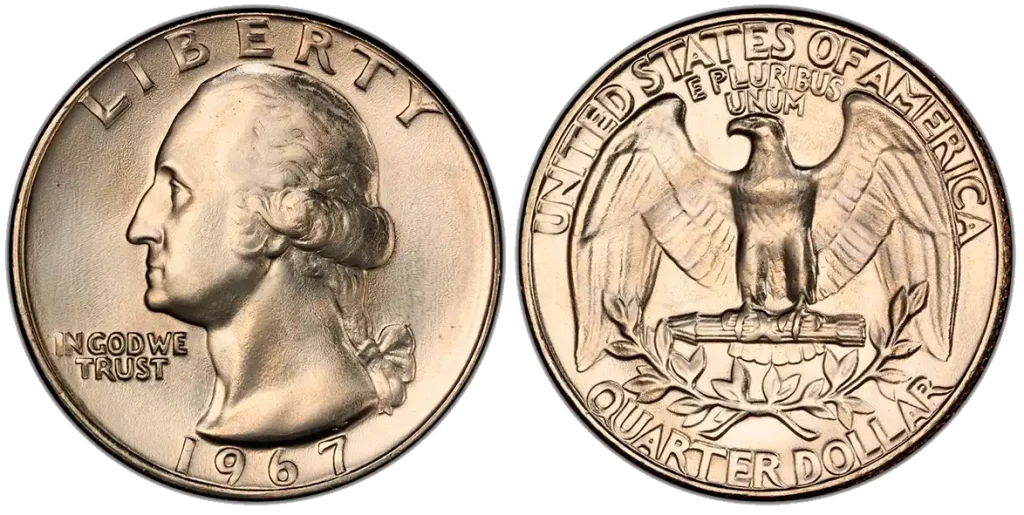
1967 Quarter Key Facts
The 1967 quarter appeared during a shift to copper-nickel clad composition. The U.S. Mint struck every coin at Philadelphia, making that facility the sole source. These coins mark the end of silver-free circulation before later designs.
Collectors and dealers use these key facts to quickly identify and value this issue. Knowing mint location, metal makeup, and production numbers helps set realistic price expectations for each piece.
Mint: Philadelphia (no mint mark)
The 1967 us quarter no mint mark comes from the Philadelphia facility. You will not find a “D” or “S” on any of these coins. That absence makes identification simple.
Each coin shows the same die pairing, which ensures uniform appearance. Collectors rely on the absence of a mint mark to confirm its origin.

Composition: Clad (75% copper, 25% nickel)
The 1967 us quarter uses a copper core with nickel outer layers. This clad formula replaced pre-1965 silver alloys. It offers durability for everyday use.
You can weigh a coin to confirm its composition. Clad quarters weigh 5.67 grams, while silver ones weigh more due to higher density.
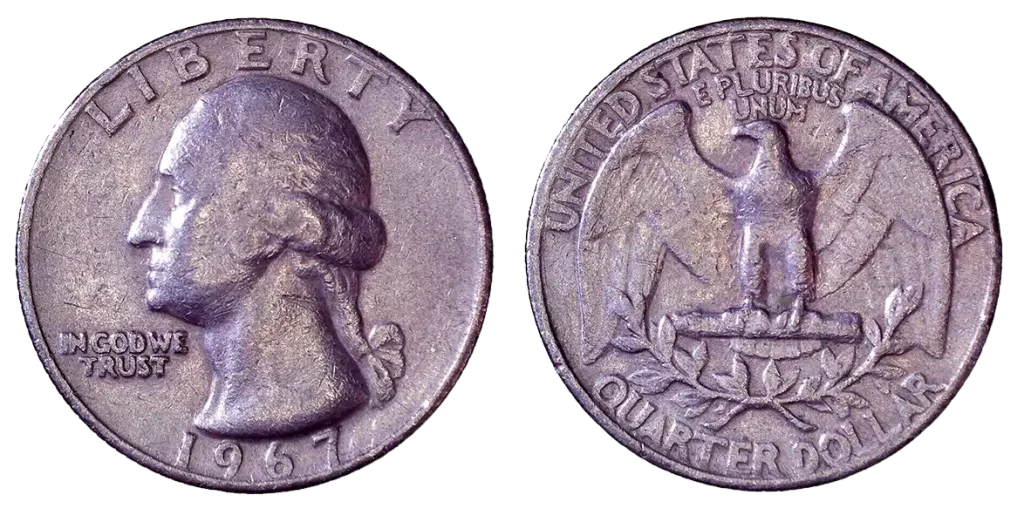
Mintage: 1.5+ billion (very common)
The us quarter 1967 saw over 1.5 billion strikes. That massive output makes it one of the most common modern quarters. Many people still use these coins today.
High survival rates keep values low in circulated grades. Only exceptional condition pieces move beyond typical dealer listings.
Special Notes
No silver content appears in any 1967 issue. These coins contain no precious metal and trade near face value in worn grades.
All 1967 quarters bear reeded edges and the same reverse design. You can quickly spot these by checking for the lack of mint marks and the clad appearance.
1967 Quarter Value Chart (2024 Prices)
The 1967 quarter remains one of the most common modern U.S. coins. The Mint struck these pieces in massive numbers. Collectors often find them in pocket change and rolls. Despite their abundance, some collectors still track specific grades and qualities.
These coins use a copper-nickel clad composition. They contain no silver and bear no mint mark. Every 1967 issue came from Philadelphia. You can confirm this by checking under bright light for any letter.
Most circulated examples trade at or near face value. You may pay between $0.25 and $0.50 for well-worn pieces. Collector demand rises for high-grade survivors. That interest drives the 1967 us quarter value above basic melt amounts.
Use the following guide to compare grades and market prices. This table shows current estimates for each condition tier. Refer to it when appraising your coins. It gives a clear view of us quarter 1967 value across grades.
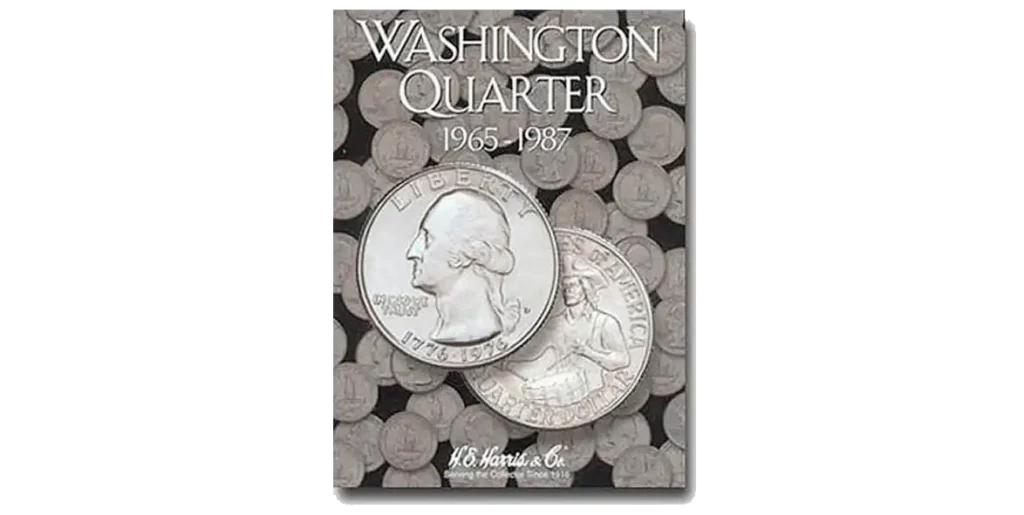
| Grade | Estimated Value (USD) |
| Good (G-4) | $0.25 – $0.50 |
| Very Fine (VF-20) | $0.50 – $1.00 |
| Extremely Fine (EF-40) | $1.00 – $2.00 |
| About Uncirculated (AU-50) | $2.00 – $3.00 |
| Mint State (MS-60) | $5.00 |
| Mint State (MS-63) | $10.00 |
| Mint State (MS-65) | $20.00 |
Rare & Valuable 1967 Quarter Errors
Some 1967 washington quarter coins struck during the coin shortage carry striking errors that boost their market value. These mistakes occur during striking or planchet preparation. Collectors seek out these coins for their rarity and visual appeal. To learn the value of 1967 us quarter errors, check recent auction results and price guides.
This section covers four major error types. You will learn how to spot each variety and estimate its premium. Focus on the portion of the coin with doubled dies, clipped planchets, off-center strikes, or broadstrikes. Use a magnifier and good lighting to follow these simple checks.
1967 Doubled Die Obverse (DDO) – $100–$500+
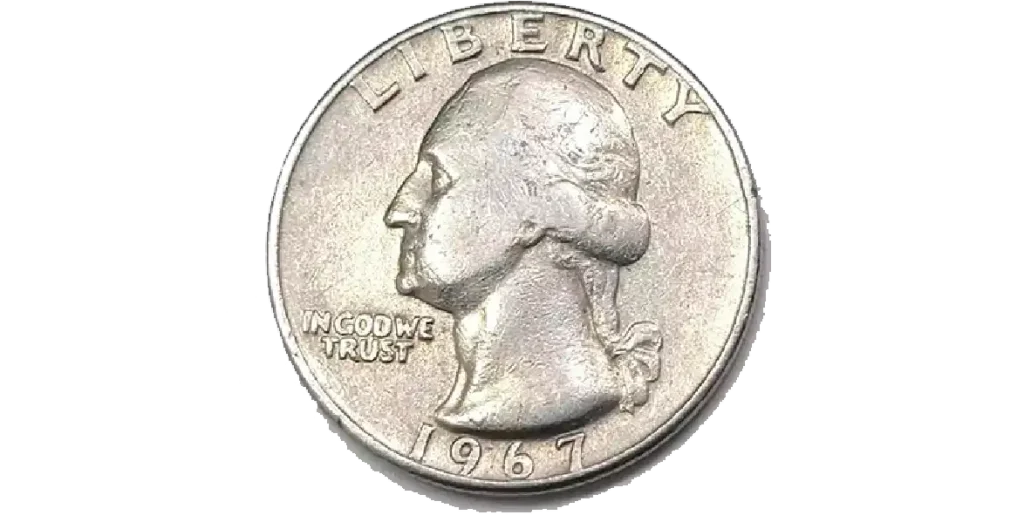
A Doubled Die Obverse shows clear doubling on legends. You can see doubled letters on LIBERTY and IN GOD WE TRUST. Collectors ask how much is a 1967 us quarter worth when they find this unusual doubling.
Few examples survive in collections. Most DDO coins trade between $100 and $500. Higher grades can fetch more at specialist auctions.
Steps to Identify a Doubled Die Obverse
- Inspect the obverse legends under 5× or 10× magnification
- Look for overlapping or shadowed letters in “LIBERTY”
- Check “IN GOD WE TRUST” for doubled words or letters
- Compare to confirmed DDO reference images
- Note degree of doubling to gauge value
Off-Center Strike – $20–$300+
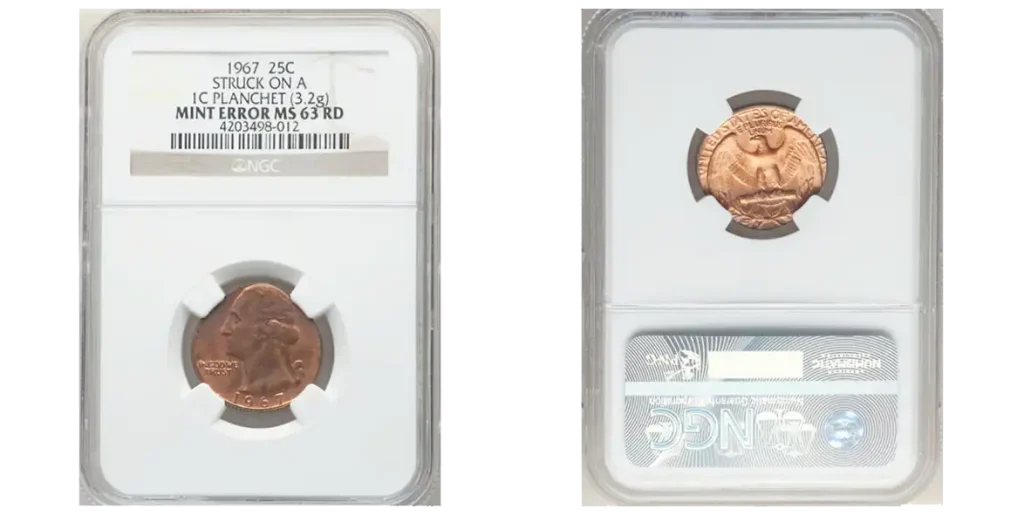
Off-center strikes occur when the planchet feeds unevenly. These coins display a partial design and blank fields. Value depends on how much of the design is missing.
Mild off-centers (10%–20%) bring lower premiums. Coins missing 30%–50% of the design can trade up to $300 or more.
Steps to Spot an Off-Center Strike
- Examine the coin’s rim for incomplete reeding
- Measure the offset percentage by comparing to a centered coin
- Note which design elements are missing (e.g., eagle or date)
- Use a template or digital overlay to confirm misalignment
- Classify the error severity to estimate its premium
Clipped Planchet – $10–$100+
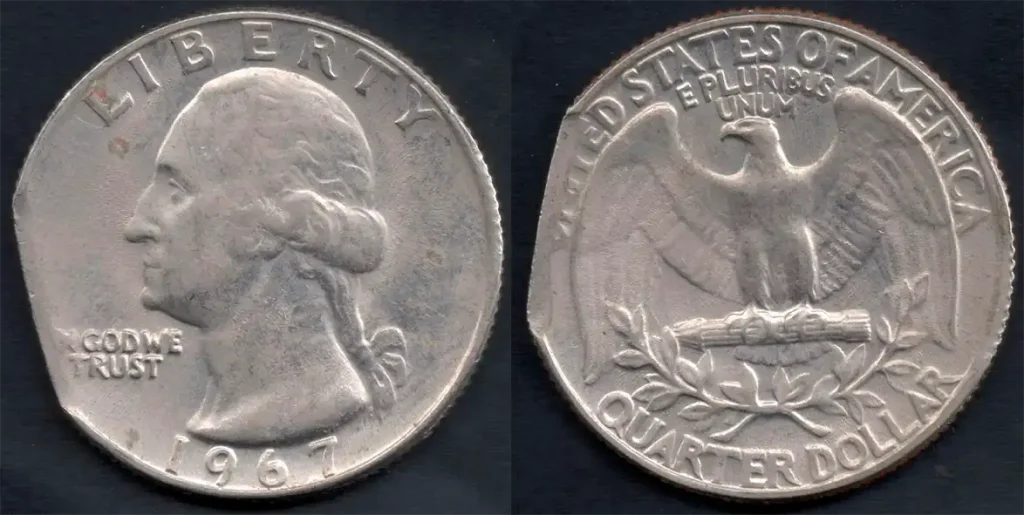
A clipped planchet shows a curved or straight missing area on the rim. This flaw arises when the blanking die cuts too close to the edge. Most clipped 1967 quarters sell for $10–$100.
Collectors value larger clips and smooth crescent shapes. Irregular cuts or rough edges lower the coin’s appeal.
Steps to Detect a Clipped Planchet
- Inspect the rim for crescent-shaped missing sections
- Feel the edge for uneven thickness or smooth cuts
- Confirm the clip shape matches blanking die errors
- Check for consistent metal flow along the clip boundary
- Compare to unclipped examples for clarity
Wrong Metal Strike – $500+ (If Confirmed)
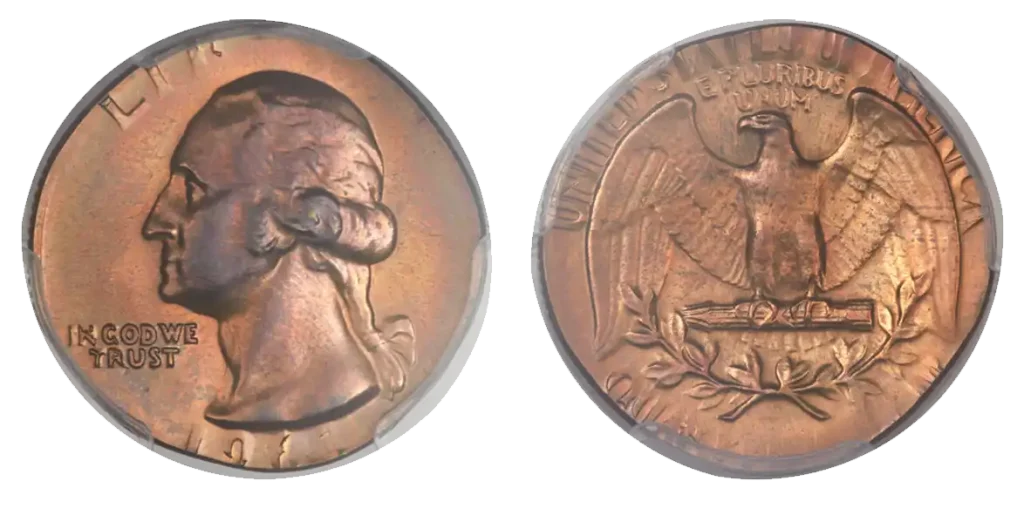
A wrong metal strike occurs when a quarter lands on a non-clad planchet. Such errors are extremely rare and highly prized. Confirmed silver or copper strikes often exceed $500 in value.
Testing metal composition remains essential. Many suspected cases turn out to be plated or altered pieces.
Steps to Verify a Wrong Metal Strike
- Weigh the coin and compare to the standard 5.67 g
- Perform a metal composition test (XRF or acid test)
- Check diameter and thickness against official specs
- Inspect for plating or surface treatments under magnification
- Seek expert authentication before trading at high premiums
| Error Type | Description | Estimated Value Range |
| Doubled Die Obverse | Doubling on text | $100 – $500+ |
| Off-Center Strike | Misaligned design | $20 – $300+ |
| Clipped Planchet | Missing crescent section | $10 – $100+ |
| Wrong Metal Strike | Potential silver planchet | $500+ |
How to Check if Your 1967 Quarter is Valuable
Start by inspecting each coin under good lighting. Use a loupe or 10× magnifier to reveal fine details. Follow a step-by-step approach to spot rare errors and premium grades.
This process helps you determine the 1967 us quarter dollar coin value before you buy or sell. You can apply these checks to any 1967 issue to find the most collectible pieces.
Look for Errors
Careful error detection can uncover high-value varieties. A magnifier reveals subtle flaws in legends and fields. Many error types hide in the motto and design rims. Inspect the coin from multiple angles to catch off-center images. Note any irregular shapes or bulges in the field that may signal an error.
Check Condition
Condition drives most market prices. Well-preserved coins with sharp details and minimal marks fetch higher bids. That clarity underpins collectible appeal. Inspect luster by tilting the coin under a bright light. Confirm that the rim denticles remain sharp and complete.
Weigh It
A simple weight test can confirm metal type. Standard clad quarters weigh 5.67 g. Suspicious coins that differ may be struck on silver planchets by mistake, revealing their 1967 us quarter silver content. Use a precise digital scale to measure weight to two decimal places. If the weight deviates significantly, suspect a planchet error.
| Metal Type | Expected Weight | Notes |
| Clad | 5.67g | Normal strike |
| Silver | 6.25g | Possible wrong planchet |
General Steps to Identify a Valuable 1967 Quarter
- Inspect the obverse and reverse under 10× magnification for doubling, misalignment, or missing design.
- Examine high-relief areas for wear and original mint luster to assess condition accurately.
- Weigh the coin on a calibrated scale; compare to 5.67 g for clad or around 6.25 g for silver errors.
- Check for clipped planchets by looking for smooth, crescent-shaped gaps along the rim.
- Compare findings to certified reference images and recent auction results.

FAQ
Why doesn’t my 1967 quarter have a mint mark?
The Philadelphia Mint struck every 1967 quarter. Philadelphia coins carried no mint mark that year.
What’s the rarest 1967 quarter error?
The rarest error is the doubled-die obverse. It shows clear doubling on “LIBERTY” or “IN GOD WE TRUST.”
Should I clean my old quarter?
No. Cleaning can scratch the surface and remove original finish. That action usually lowers its value.
Can I find a 1967 quarter in circulation?
Yes. Billions of 1967 quarters remain in pocket change and bank rolls. You can still find them in everyday transactions.
Final Verdict: Is Your 1967 Quarter Valuable?
Most 1967 quarters trade at face value or just above it. You can expect most pieces to fetch between $0.25 and $1 in circulated grades. If you find an uncirculated example, you may see a value from $1 up to $20 depending on strike quality and eye appeal.
Major errors can push values much higher. Doubled dies, off-center strikes, and clipped planchets often sell for $50 to $500 or more. Always inspect your coins closely with a loupe and compare to known error types before pricing.